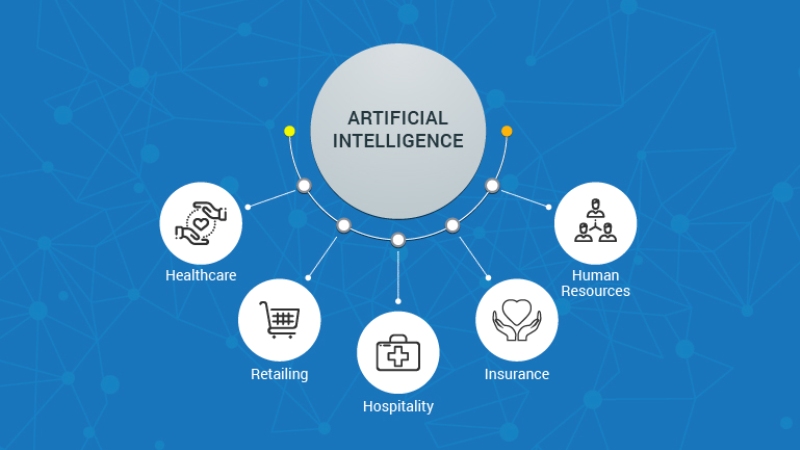What is the role of AI in DATA, and how is it collected and processed?
Data plays a critical role in the development and operation of artificial intelligence (AI) systems. In order for AI algorithms to learn and make accurate predictions, they require vast amounts of high-quality data.
Data is collected from a variety of sources, such as sensors, online platforms, and user-generated content. It can also be generated through simulations or crowdsourcing. Once collected, the data must be processed to remove any noise or errors and then transformed into a format that can be used by machine learning algorithms.
This involves a number of steps, such as feature extraction, normalization, and dimensionality reduction. Feature extraction involves identifying the most relevant aspects of the data, while normalization involves scaling the data to a standard range. Dimensionality reduction is used to reduce the number of features in the data to improve computational efficiency.
Once the data has been processed, it can be used to train machine learning models. This involves using a portion of the data, known as the training set, to teach the algorithm to recognize patterns and make predictions. The algorithm is then evaluated on a separate portion of the data, known as the validation set, to ensure that it can generalize to new data.
The success of an AI system depends heavily on the quality and quantity of data used to train it. As such, data collection, processing, and management are critical components of AI development.
In addition to the steps mentioned above, there are various techniques used in data collection and processing for AI systems. Some of these techniques include:
- Data labeling: In order to train a machine learning model, the data must be labeled with the correct output or classification. This can be done manually or through automated labeling tools.
- Data augmentation: This technique involves creating new data from existing data by applying transformations such as rotation, translation, or scaling. This can help to increase the size of the dataset and improve the performance of the AI model.
- Data cleaning: Raw data often contains errors or inconsistencies that can affect the performance of AI algorithms. Data cleaning involves identifying and correcting these errors to ensure the accuracy of the data.
- Data integration: In many cases, data must be collected from multiple sources and combined into a single dataset. Data integration involves merging and harmonizing the data to ensure consistency and accuracy.
- Data privacy and security: With the increasing amount of data being collected for AI, it is important to ensure that data is collected, processed, and stored securely and in compliance with regulations such as GDPR and CCPA.
Overall, data is a critical component of AI and machine learning systems, and the techniques used for data collection and processing are constantly evolving to improve the accuracy and efficiency of these systems.
Another important aspect of data in AI is the concept of bias. Bias can arise in the data if the data used to train the AI model is not representative of the real-world population or if it contains inherent biases. For example, if a facial recognition AI system is trained primarily on data of light-skinned individuals, it may perform poorly on individuals with darker skin tones, leading to discrimination.
To address this issue, it is important to carefully consider the data used for AI training and to implement measures to mitigate bias. This can include collecting data from a diverse set of sources, ensuring that the data is representative of the population, and using techniques such as oversampling or undersampling to balance the dataset.
Additionally, explainability and interpretability are important considerations when it comes to AI and data. It is important for stakeholders to be able to understand how AI algorithms make decisions and why certain predictions are made. This can help to build trust in AI systems and ensure that they are used in an ethical and responsible manner.
In summary, data plays a crucial role in the development and operation of AI systems. Techniques such as data labeling, augmentation, cleaning, integration, and privacy and security are used to collect and process data for AI training. However, it is also important to consider issues such as bias, explainability, and interpretability when working with data in AI.
Another important aspect of data in AI is the ongoing management and maintenance of the data used to train and improve AI models. This includes monitoring data quality and updating the dataset over time to ensure that the AI system is able to adapt to changes in the real world.
To do this, it is important to establish a robust data management framework that includes processes for data acquisition, storage, processing, analysis, and archiving. This framework should also include procedures for data governance and oversight, to ensure that data is used in an ethical and responsible manner.
Furthermore, data in AI can be used for a variety of purposes beyond training machine learning models. For example, data can be used for natural language processing, computer vision, and recommendation systems. In these cases, data is often pre-processed and transformed into different formats or structures to support these specific applications.
Finally, data plays a key role in the ongoing evaluation and improvement of AI systems. As AI models are deployed in the real world, it is important to continually evaluate their performance and identify opportunities for improvement. This requires ongoing data collection and analysis to identify new trends and patterns in the data, as well as to identify areas where the AI model is struggling to perform accurately.
In conclusion, data is a critical component of AI and plays a crucial role in the development, deployment, and ongoing management of AI systems. By carefully collecting, processing, and managing data, organizations can build robust and accurate AI systems that provide real value to users and stakeholders.




